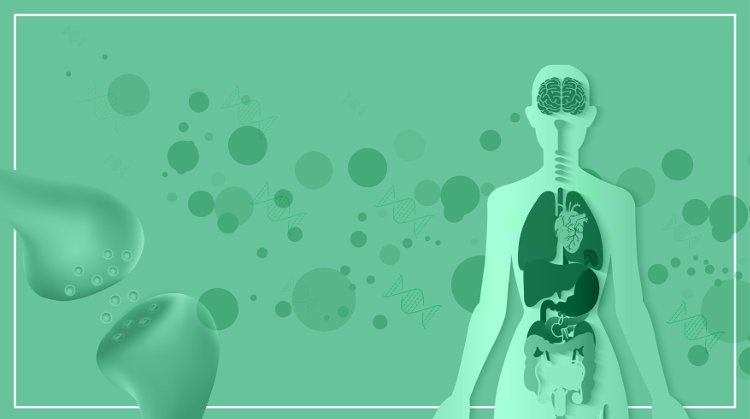The endocannabinoid system, hemp, and CBD: The bigger picture
We are just beginning to appreciate the ECS and its role in health and disease, even as marketplace obstacles abound for hemp cannabinoids.
Photo © AdobeStock.com/Wut ti kit

The 1990s were an important decade of innovation that saw a remarkable medical discovery about the human body called the endocannabinoid system (ECS). The ECS can be described as an intricate physiological system utilizing cannabinoids produced in the body (endocannabinoids) and the receptors they attach to. At the helm of this unearthing was the work of Raphael Mechoulam, PhD, of The Hebrew University of Jerusalem and several colleagues at the National Institute of Mental Health in the U.S. Due to politics and the stigma attached to cannabis and cannabinoids, ECS research was previously buried, and many of the findings about the plant’s medicinal value was diverted outside of the U.S.-a true medical travesty. Fortunately, research and education is slowly disassembling this unjustified besmirchment, and we are just beginning to appreciate the ECS and its role in health and disease, even as marketplace obstacles abound for hemp cannabinoids.
The ECS refers to a complex network of receptors found on all cells that accept cannabinoids (CB1 and CB2), as well as the endogenous cannabinoids we produce in the body (such as the endocannabinoids anandamide and 2-AG) and the enzymes involved with their production and degradation-what some call our “endocannabidiome.” In addition to anandamide and 2-AG, other lipid-based molecules have also been classified as endocannabinoids due to their effects on cannabinoid receptors, including N-arachidonoyl dopamine, virodhamine, palmitoylethanolamide, oleoylethanolamide, and several byproducts of omega-3 fatty acids.
Our endocannabinoids are produced on demand, and they exert widespread adaptive cellular responses to a variety of internal and external stressors that can jeopardize health. When cannabinoids activate the CB1 receptors, analgesic, vasodilation, and inflammatory markers indicating inflammation reduction have been noted. When the CB2 receptors are activated, the following effects have been described in the literature: immune modulation, T cell regulation, the curbing of abnormal cell growth, reduced inflammation, repairing of bone, and several other functions.
Acting as the conductor of our body’s physiological symphony, the ECS’s signaling pathways are in constant communication with every organ system and globally act as the modulator of activity to maintain balance and well-being (homeostasis). At the organ level, once endocannabinoids attach to our receptors, they influence important regulatory mechanisms that govern major physiological processes, including stress, anxiety, pain, inflammation, insomnia, ocular health, bone repair, neurological well-being, and cancer, to name a few. Essentially, the ECS is implicated in the adaptogenic control of the most vital processes, thus creating stability in the body.
There are times when we do not produce enough endocannabinoids and must rely on dietary cannabinoids (phytocannabinoids) to help support the ECS. Hemp is the richest source of these phytocannbinoids. And while phytocannabinoids hold great promise for health and as a viable market, the market currently faces numerous challenges that have been difficult to surmount.
The Value of Phytocannabinoids
Nutritional and botanical medicine is barely more than a century old. As we grasp the incredible roles the ECS plays in keeping us in balance and its involvement in disease prevention and treatment, we will learn to appreciate how hemp-derived phytocannabinoids will play pivotal roles in nutrition and medicine. This is further supported by the enormous amount of research published on the manipulation or support of the ECS in neurological, inflammatory, cardiovascular, and ocular conditions; bone disorders; as well as cancer. There is overwhelming evidence that our endocannabidiome is a target of choice for many diseases that may be suitably treated with hemp phytocannabinoids.
While the ECS and phytocannabinoids have been studied in detail, the clinical value in many disease models requires continued research and clinical trials. The hemp plant (Cannabis sativa L.) contains over a hundred different phytocannabinoids which collectively provide a full spectrum of supportive activity. Research demonstrates that this shared participation among the phytocannabinoids is responsible for optimal dose ranges and better clinical outcomes when compared to singling out any particular one cannabinoid such as cannabidiol (CBD).
While CBD has recently grabbed the spotlight primarily due to GW Pharmaceuticals’ CBD-based FDA-approved drug, its effects can be greatly enhanced by support from the rest of the phytocannabinoid family. This has been a major tenet of botanical medicine and was beautifully described as the “entourage effect” by Dr. Ethan Russo.
Dr. Mechoulam, mentioned at the beginning of this article, also said it best when he stated that, “Biochemically active natural products are in many instances accompanied by chemically related though biologically inactive constituents. Very seldom is the biological activity of the active constituent assayed together with inactive ‘entourage’ compounds. Investigations of the effect of the active component in the presence of its ‘entourage’ compounds may lead to results that differ from those observed with the active component only.”
It’s important to underscore the intricate interplay of CBD and other important phytocannabinoids with various receptors in the body. While CBD has tremendous medical benefits, it cannot support the entire ECS on its own-period.
The Status of Dietary Phytocannabinoids
Unfortunately, despite the value of phytocannabinoids to health that research is unveiling, phytocannabinoids and their fate in the marketplace still face some major obstacles.
From a legal standpoint, the question remains whether CBD is legal. Federal and state laws continue to be at odds with each other, and the situation continues to be confusing for the marketplace. Citing the 1994 Dietary Supplement Health and Education Act (DSHEA) governing dietary supplements in the U.S., FDA’s position on not allowing specific phytocannabinoids as dietary supplements has not changed. DSHEA clearly states that if a substance was not in commerce prior to 1994, it cannot be grandfathered in as a dietary supplement: strike one against CBD. The law also states that if a natural substance becomes an FDA-approved drug before it is sold in the natural marketplace, it can no longer be sold as a dietary supplement: strike two against CBD in light of GW Pharmaceuticals’ FDA-approved CBD drug. It seems that companies either are ignoring or don’t understand these federal regulations. Unless FDA is going to change or dismantle DSHEA, the language in DSHEA does not support quantifying or qualifying CBD on a label as a dietary supplement.
The more important class of naturally occurring phytocannabinoids in hemp and their effects on the ECS now find themselves embroiled in this unfortunate situation. Cannabinoid companies all anxiously await FDA regulations that they hope are soon to follow and may change the market picture for phytocannabinoid products.
To make matters worse for phytocannabinoids, some companies are illegally labeling products and passing off marijuana hybrids as industrial hemp. How FDA, the U.S. Drug Enforcement Administration (DEA), and the USDA deal with these “Frankenstein” strains remains to be seen. Prior to the Farm Bill’s passage in 2018, farming of hemp was banned in the U.S. for over 80 years, and no domestic-sourced hemp has been available. These new hybrid strains are not true industrial hemp and have no history of human consumption. This is in direct opposition to true industrial hemp strains that do have decades of human comsumption outside of the U.S. and are available for growers. We have yet to see how government agencies view this issue.
Another problem for phytocannabinoids stems from the introduction of CBD isolate to the marketplace. In our opinion, if you concentrate a substance in a plant to 70%, 80%, or 90%, the isolated substance is viewed very differently from the plant it came from. Such is the case with CBD isolates. Considering the fact that CBD isolates were not on the market prior to 1994 as either a food or dietary supplement and are in an FDA-approved drug, FDA would likely consider these in violation of federal law. It’s also unfortunate to see companies touting 70%-, 80%-, 90%-plus CBD oils as full-spectrum oils. Not only would those concentrations place such products being close to drug status, how is it that companies try to convince the market that concentrations that high come from a true botanical spectrum oil? Buyer beware.
Clouding the Value of Phytocannbinoids and the ECS
To think that a single magic-bullet component like CBD is responsible for all of the clinical benefits of hemp’s 100-plus phytocannabinoids is sorely shortsighted. This is no different in the many botanicals on the marketplace-there are many ginsenosides in ginseng, many curcuminioids in curcumin, etc. What case can anyone make in thinking that the clinical benefits of hemp are due to only one phytocannabinoid when there are close to 100 cannabinoids known to exist in the plant? What case can anyone make thinking that CBD can fully support the ECS on its own? Undoubtedly, CBD and the rest of the family of phytocannabinoids naturally found in hemp represent some of the most important, clinically relevant phytonutrients that have come to the marketplace since the market’s inception.
With more research and clinical trials, our understanding about the role of the ECS and beneficial hemp phytocannabinoids play in health and disease is paramount. The fate and evolution of this sector will hopefully transcend market and regulatory battles. We must embrace the bigger picture: that phytocannabinoids and the health of our ECS will play an increasingly important role in the health landscape to come.
Carl Germano, CNS, CDN, is a NY Board Certified Clinical Nutritionist and vice president of Verdant Oasis, a developer of exclusive, high-quality hemp products through vertically integrated operations, from seed to finished products. He holds a master’s degree in clinical nutrition from New York University and has over 37 years of experience in product development and education for several of the largest vitamin supplement companies in the trade, including Solgar, Country Life, Bluebonnet, Ajinomoto, and others. In addition, he has been instrumental in bringing cutting-edge formulas and phytocannabinoid ingredients to a variety of markets, including dietary supplements, medical foods, and functional beverages. He is a prolific author with several bestselling trade books including The Misled Athlete, Natures Pain Killers, The Osteoporosis Solution, The Brain Wellness Plan, and his most recent, Road to Ananda: The Simple Guide to the Endocannabinoid System, Phytocannabinoids & Your Health.
